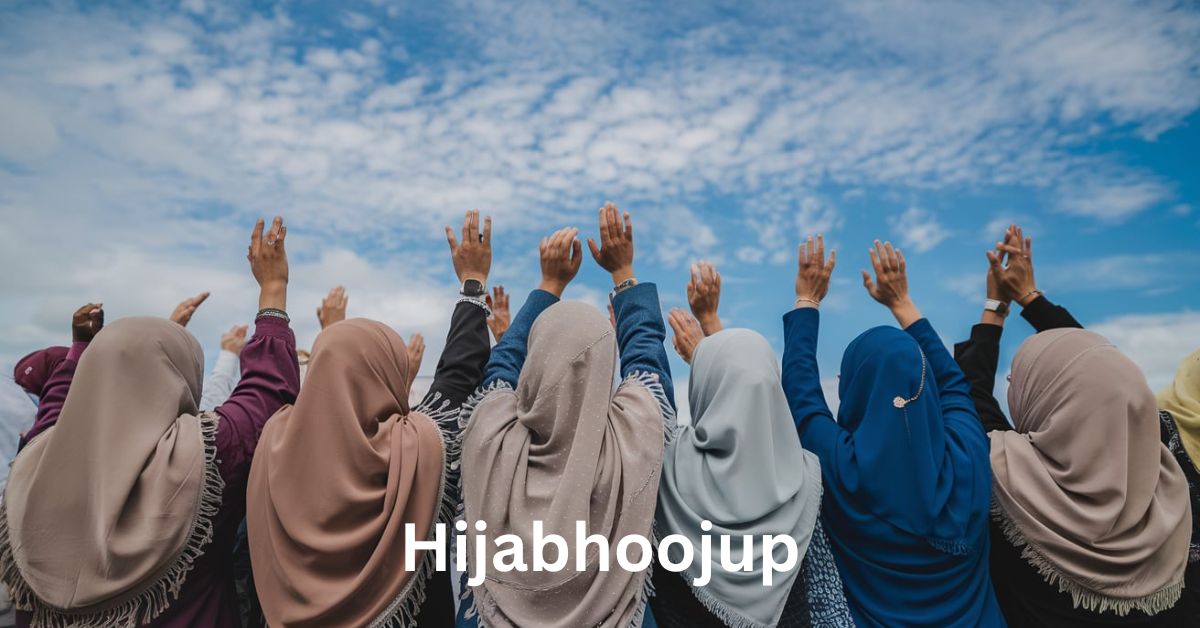Hijabhoojup: Exploring the Rich History, Empowerment, and Modern Significance

Hijabhoojup is a term that encapsulates a blend of cultural, historical, and religious significance, particularly related to the practice of wearing the hijab, a traditional headscarf worn by many Muslim women. But hijabhoojup goes beyond the simple act of covering one’s head; it embodies a deeper narrative of identity, empowerment, and a connection to one’s faith and culture. In this article, we’ll explore the history of hijabhoojup, its role in modern society, and its impact on the lives of women who choose to embrace it. We’ll also discuss how hijabhoojup boldly stands as a symbol of strength, dignity, and resilience.
The Historical Roots of Hijabhoojup
Early Origins of the Hijab
The concept of hijab dates back centuries, with roots in various religious and cultural traditions. The word “hijab” itself is derived from the Arabic word “hajaba,” which means to hide or cover. Historically, the practice of veiling or covering oneself wasn’t exclusive to Islam; it was prevalent in various ancient civilizations, including Mesopotamia, Byzantium, and Persia, where women wore veils as a sign of modesty and social status.
The Role of Hijabhoojup in Islamic Tradition
In Islam, the hijab is more than just a piece of cloth; it is an expression of faith. The Quran, the holy book of Islam, contains verses that emphasize modesty and encourage both men and women to dress modestly. For women, the hijab represents a commitment to these principles. However, hijabhoojup is not merely about modesty; it is also about identity and self-expression.
The Evolution of Hijabhoojup Over Time
Over the centuries, the practice of wearing the hijab has evolved. In different regions and cultures, the hijab has taken on various forms, styles, and meanings. For some, it is a simple headscarf; for others, it is a complete covering that includes the body and face. Hijabhoojup, as a concept, reflects this diversity and the personal choices women make in how they wear their hijab.
Hijabhoojup in the Modern World
Hijabhoojup as a Symbol of Empowerment
In today’s world, hijabhoojup is often seen as a powerful symbol of empowerment. Many women who wear the hijab do so as an assertion of their identity and autonomy. By choosing to wear the hijab, they are making a statement about their values, beliefs, and the freedom to express themselves in a way that aligns with their faith and culture.
The Intersection of Hijabhoojup and Fashion
The intersection of hijabhoojup and fashion has given rise to a vibrant global movement. Modest fashion, which includes stylish and contemporary interpretations of the hijab, has gained popularity worldwide. Designers and influencers have embraced hijabhoojup, creating clothing lines and fashion collections that cater to the needs of Muslim women who wish to dress modestly while staying fashionable. This fusion of tradition and modernity has helped redefine the image of the hijab, making it a part of mainstream fashion.
The Role of Social Media in Promoting Hijabhoojup
Social media platforms have played a crucial role in promoting hijabhoojup and challenging stereotypes. Muslim women from different parts of the world use social media to share their experiences, styles, and stories. Influencers and bloggers have become voices for the hijabhoojup movement, using platforms like Instagram, YouTube, and TikTok to showcase how the hijab can be both a spiritual and fashionable choice. This online presence has helped to normalize the hijab and create a sense of community among those who wear it.
Hijabhoojup and the Challenges Faced by Women
Addressing Misconceptions and Stereotypes
Despite the growing acceptance of hijabhoojup, women who wear the hijab still face challenges, including misconceptions and stereotypes. In some societies, the hijab is wrongly associated with oppression or forced modesty. However, for many women, hijabhoojup is a personal choice that represents freedom, not restriction. It’s essential to recognize and respect the diversity of experiences among women who wear the hijab, as their reasons for doing so are as varied as their backgrounds.
Legal and Social Challenges
In certain countries, the wearing of the hijab has become a contentious issue, leading to debates over religious freedom and secularism. Some nations have implemented laws that restrict or ban the wearing of the hijab in public spaces, sparking protests and legal battles. These challenges highlight the ongoing struggle for the rights of Muslim women to practice their religion and express their identity freely. Hijabhoojup, in this context, becomes a symbol of resistance and resilience against discrimination.
The Mental and Emotional Impact of Hijabhoojup
Wearing the hijab can also have mental and emotional implications for women. While many women feel empowered and proud to wear the hijab, others may face internal and external pressures that make the decision challenging. It’s important to support women in their choices, whether they decide to wear the hijab or not, and to create an environment where they can make that choice without fear of judgment or discrimination.
The Global Impact of Hijabhoojup
Hijabhoojup and Cultural Exchange
The concept of hijabhoojup has transcended cultural and geographical boundaries, becoming a symbol of cultural exchange and understanding. As more people around the world learn about the hijab and its significance, they begin to appreciate the diversity of Muslim cultures and the values that hijabhoojup represents. This exchange has helped to bridge cultural gaps and foster mutual respect and understanding.
The Influence of Hijabhoojup in the USA
In the United States, hijabhoojup has gained recognition as a significant cultural and religious practice. American Muslim women have played a pivotal role in promoting hijabhoojup through activism, education, and fashion. By sharing their stories and experiences, they have contributed to a broader understanding of what it means to wear the hijab in a Western context. Their efforts have helped to challenge stereotypes and create a more inclusive society where diversity is celebrated.
Hijabhoojup and the Future
As we look to the future, hijabhoojup will likely continue to evolve and adapt to the changing needs and desires of Muslim women around the world. The ongoing dialogue surrounding hijabhoojup will shape its future, influencing how it is perceived and practiced in different societies. What remains constant, however, is the underlying message of hijabhoojup: a commitment to faith, identity, and the empowerment of women.
FAQs About Hijabhoojup
What is hijabhoojup?
Hijabhoojup is a concept that encompasses the wearing of the hijab as a symbol of modesty, faith, and identity. It reflects the personal choices women make in how they wear the hijab and the broader cultural, religious, and social significance of this practice.
Why do women choose to wear the hijab?
Women choose to wear the hijab for various reasons, including religious beliefs, cultural identity, and personal choice. For many, the hijab is a way to express their faith and commitment to modesty. It can also be a symbol of empowerment and self-expression.
Is hijabhoojup only about covering the head?
Hijabhoojup is not just about covering the head; it is about embracing a way of life that aligns with one’s beliefs and values. While the hijab typically refers to a headscarf, hijabhoojup can include different forms of modest dress and behavior that reflect a person’s commitment to their faith and culture.
How has hijabhoojup influenced fashion?
Hijabhoojup has significantly influenced the fashion industry, particularly in the realm of modest fashion. Designers and brands have created stylish and contemporary clothing that caters to women who wish to dress modestly while remaining fashionable. Social media influencers have also played a key role in promoting hijabhoojup and showcasing how the hijab can be integrated into modern fashion.
What challenges do women face when wearing the hijab?
Women who wear the hijab may face various challenges, including misconceptions, stereotypes, and legal restrictions. In some societies, the hijab is wrongly associated with oppression, leading to discrimination. However, many women view hijabhoojup as a symbol of empowerment and resistance against these challenges.
How can society better support women who choose to wear the hijab?
Society can better support women who choose to wear the hijab by promoting understanding and respect for their choices. This includes challenging stereotypes, advocating for religious freedom, and creating inclusive environments where women can express their identities without fear of judgment or discrimination.
Conclusion
Hijabhoojup is a powerful concept that reflects the rich history, cultural significance, and modern relevance of the hijab. It embodies the values of modesty, faith, and empowerment that many women hold dear. As hijabhoojup continues to evolve, it will remain a symbol of strength, dignity, and resilience for those who choose to embrace it. By understanding and respecting hijabhoojup, we can contribute to a more inclusive and compassionate world where diversity is celebrated and everyone is free to express their identity in their own way.










